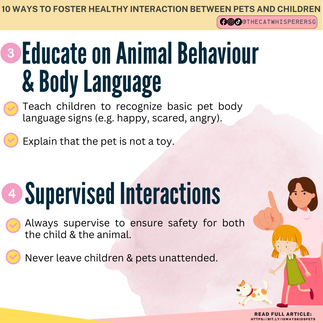10 Ways to Foster Healthy Interaction Between Pets and Children
- The Cat Whisperer Singapore

- Apr 30, 2024
- 2 min read

Integrating pets into a home with children can be a delicate process, and sometimes parents may not know the correct methods, that can impact the comfort and safety of both the pet & the children.
Here are 10 Ways to Foster Healthy Interaction Between Pets and Children.
















Comments